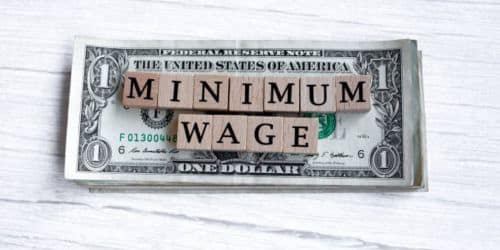One of the best investments one can make is in their own home. By refinancing, homeowners can utilize their property as a means of leveraging their investment. Refinancing your home’s mortgage can be a wise financial decision for a variety of reasons. One of the most common motivations for refinancing is to access the equity in your home and obtain cash. Additionally, refinancing can help you reduce your monthly mortgage payment or shorten the term of your loan. In this article, we will delve into ways to refinance a house that is paid off with bad credit, the credit score needed, and the reasons not to refinance your home.
Overview
The process of refinancing a house involves replacing your existing mortgage with a new one, typically featuring a revised principal amount and interest rate. The lending institution proceeds to utilize the updated mortgage to settle the previous one, resulting in a single loan and a single monthly payment for you. There are several reasons why individuals opt to refinance their homes. One may consider utilizing a cash-out refinance to leverage their home’s equity or exploring a rate and term refinance to secure a more favorable interest rate and/or reduce their monthly payments. Refinancing can be utilized to eliminate an individual from a mortgage, which is frequently observed in instances of divorce. It is also possible to include an additional individual on the mortgage.
How to Refinance a House That Is Paid Off
Homeowners who possess a property that is free of any outstanding debt are in a favorable position to leverage the equity in their home for various purposes, such as funding a college education or undertaking home renovations. Hence, to refinance a fully paid-off property, one must apply for a new loan and satisfy the eligibility criteria for debt, earnings, and credit. Below are ways to refinance a house that is paid off:
#1. Ensure to Meet the Loan Requirements
This is a good way to refinance a house that is paid off. When it comes to finding the ideal lender for your needs, being a homeowner can provide you with a distinct advantage. Assuming that you have paid off an outstanding type of debt, such as a mortgage, lenders tend to view you more favorably due to your demonstrated responsibility. It is important to note that even with underwriting, adherence to the debt-to-income (DTI) and credit criteria outlined in mortgage guidelines remains a prerequisite.
The debt-to-income (DTI) ratio is a crucial financial metric that determines whether your monthly debt payments are within a reasonable range, allowing you to maintain a comfortable buffer with your yearly earnings. Depending on the loan program, the debt-to-income ratio (DTI) standards may be different. However, it is best to keep the DTI below 41%. It is advisable to inform your lender if you intend to consolidate other debts, such as charge cards, mortgages, or student loans, along with the refinance. When consolidating debt, lenders take the final figures into account.
#2. Ascertain Equity
This is another way to refinance a house that is paid off. The maximum amount that can be refinanced is determined by the appraised value of the property. The calculation of equity involves the deduction of debt from the equitable market value. As there is no outstanding debt on your property, the entirety of its present value represents 100% equity. The lending institution initiates an appraisal process to ascertain the fair market value of your property.
The process of withdrawing funds from a property is commonly referred to as a “cash-out refinance.” This does not ensure access to all equity, as there may be withdrawal limits. Cash-out refinancing for 100% of a home’s worth is rare. Many software applications limit equity access to avoid market swings and financial issues.
#3. Place Home Equity Loans Against Each Other
As you embark on your quest for financial assistance, each lender you approach will furnish you with a loan estimate. Delve into the intricacies of the loans and juxtapose them against each other to ascertain which lender offers the most favorable terms. Beyond just the interest rate and payment schedule, it’s wise to take a gander at the annual percentage rate (APR), loan duration, overall interest accrued, and any pesky loan fees.
#4. Negotiate the Terms of the Loan
Once you’ve scrutinized the loan options, why not try your hand at negotiating with the lenders? Imagine this: Lender A gives you the best interest rate, but you really want to borrow from Lender B. Why not attempt to negotiate with Lender B in this situation and see if they can match or even beat the lower rate that Lender A has offered? When engaging in negotiations, it’s important to keep a watchful eye on lenders who may attempt to alter other loan conditions to satisfy your demands.
#5. Be Aware of Your Position
When you pay for your house, you become the proud owner of a 100% equity abode. While having sufficient equity is undoubtedly crucial, it is merely one of the prerequisites that you must fulfill to refinance a house that is paid off.
How to Refinance a House With Bad Credit
There are numerous ways to refinance your house with bad credit, including working to build up your credit rating. However, if you don’t have time or the funds to raise your credit score, here are some more immediate steps to refinance a house with bad credit:
#1. Collaborate With Your Current Lender
When considering a home refinance with poor credit, it is advisable to initiate a conversation with your existing lender to explore potential options. As a current customer, you may be eligible for more leniency regarding credit requirements, particularly if you have a positive payment history. Your lender is likely to keep your business.
Even if your current lender allows a refinance, get estimates from multiple lenders to get the best rates. It is advisable to send in all your applications within 45 days if you choose this option. FICO will recognize it as rate shopping and not penalize you for several hard credit queries in that little period.
#2. Review the VA Refinance Program
Veterans, servicemembers, and qualifying spouses may refinance their mortgage with VA funding. A lender may require a 620 credit score, even when the VA does not.
#3. FHA Refi Programs
Another government-supported alternative to refinancing is going through the Federal Housing Administration (FHA). In general, loans guaranteed by the FHA have laxer restrictions, and according to the program, they allow lenders to become eligible for refinancing with credit scores as low as 500. This is possible because the FHA guarantees the loans.
#4. Look for a Co-signer
You might also ask a trusted relative or friend with good credit to co-sign the loan. If you default on payments, the co-signer would be legally responsible for the loan, and the lender may sue them. The credit of the co-signer will suffer as well if payments are missed. So, if you choose to go this way, you should be aware that it may have significant repercussions for the individual who co-signs the loan with you. Ensure that everyone is on the same page about the conditions of the loan and that they are willing to take the risk.
You may want to see: How Many Times Can You Refinance Your Home
Credit Score Needed to Refinance a House
Most financing schemes require a minimum credit score of 620 to refinance a home loan, although this varies. When it comes to refinancing, lenders typically provide better terms and lower interest rates to borrowers who have higher credit scores. The most effective strategy for obtaining competitive rate offers when you are refinancing is to first work on improving your credit score.
In addition, a “traditional” rate-and-term refinance is a means to change the mortgage’s interest rate or repayment period. In most cases, a credit score of 620 or more is required to refinance a single-family house.
Reasons Not to Refinance Your Home
Refinancing to take advantage of lower interest rates is a logical decision that can result in significant savings. While the statement may hold some truth, it is imperative to take various factors into account before finalizing any agreement. In certain situations, opting for refinancing may not be the most practical decision, as it can potentially affect your overall financial standing. It could be wise to look into several real estate investing options before settling on one.. Here, we will explore the reasons not to refinance your home.
#1. The Cost of It
You are required to pay closing fees whenever you get a mortgage, including when you refinance an existing mortgage. The percentage of the loan amount that goes toward the closing fees is typically between two and six percent. Cash is typically accepted at the time of closing for payment of any closing costs. So, if you want to keep your initial expenditures to a minimum, you can choose to have your closing costs rolled into the overall cost of the loan, or you can negotiate with the lender to have your closing costs covered in exchange for higher interest rates.
#2. You Run the Risk of Accumulating Even More Debt
You also need to have a distinct plan for how you intend to spend the money that will become available to you when you refinance. This is especially important to keep in mind if you intend to take cash from your home’s equity. So, if you intend to reinvest your equity in another home, schooling, or for some other reason, you should make sure that you assess the costs against the potential returns.
#3. Expensive Closing Costs
There is no such thing as a no-cost refinance in today’s market. Either you pay cash for the closing fees or you pay a higher interest rate. Neither option is good. In certain circumstances, you may be able to roll the closing fees into your loan. On the other hand, you will be responsible for continuing to pay interest on closing expenses for the duration of your loan.
#4. Eligibility
You may have to wait until a particular period has passed since the closure of your initial loan before you may refinance. It’s also possible that you’ll want to wait a few years after your loan’s default penalty expires before refinancing.
#5. Increased Time to Break Even
One of the primary reasons not to refinance is the length of time it will take to recover the closing fees of the new loan. The break-even point is the number of months it takes before you begin saving money. You will have recovered all of your initial outlay for the refinancing by the conclusion of the break-even period.
In Essence
The process of refinancing your home can enable you to modify the duration of your existing mortgage, thereby facilitating faster repayment or a reduction in your monthly installments. It can also serve as a means of obtaining cash when cashing out your investments. However, it is not advisable to consider your home as a means of generating fast cash, particularly if you intend to utilize it for debt repayment. To mitigate the need to tap into your property equity during challenging financial situations, it is advisable to focus on augmenting your savings and establishing a robust emergency fund.
When Can You Refinance a House?
There is typically no grace period for refinancing a house. Even if your present lender requires a six-month gap between loans, you are free to refinance with a new one. However, a cash-out refinance must occur at least six months following the most recent closure (often 180 days).
Why Would You Refinance a House?
The potential to reduce your current interest rate is a major incentive for considering a refinance.
References
- rocketmortgage.com
- nerdwallet.com
- weekand.com
- forbes.com
- lendingtree.com
We Also Recommend the Following
- REFINANCE A LOAN: How to Refinance a Loan With Bad Credit
- How Much Does It Cost To Refinance Mortgage In 2023
- BEST CAR REFINANCE: Top Refinance Loans, Rates, & Companies With Bad Credit
- HOW MANY TIMES CAN YOU REFINANCE YOUR HOME: Updated
- HOW SOON CAN YOU REFINANCE A MORTGAGE IN 2023?
- OPTIONS TRADING PLATFORM: Top Free Platforms for Pro & Beginners






